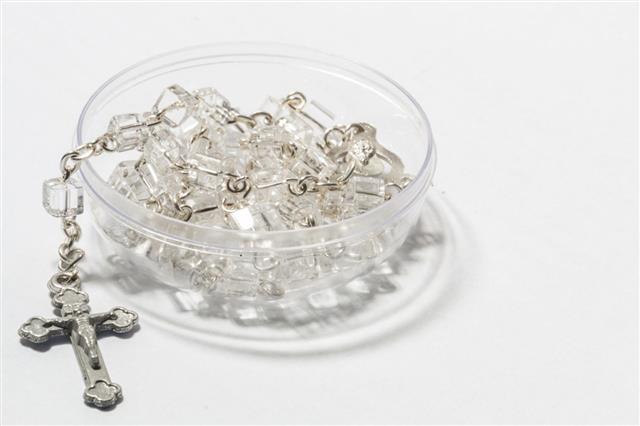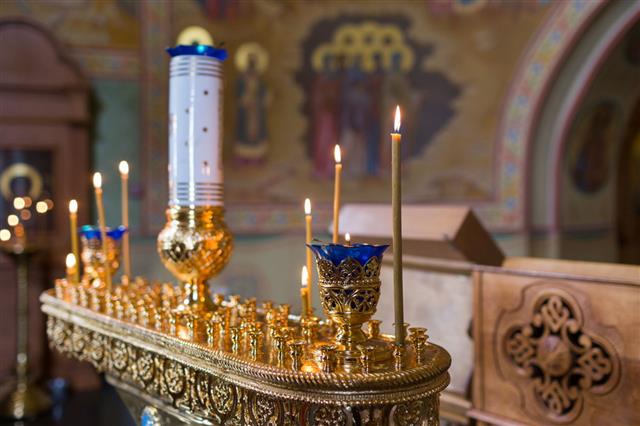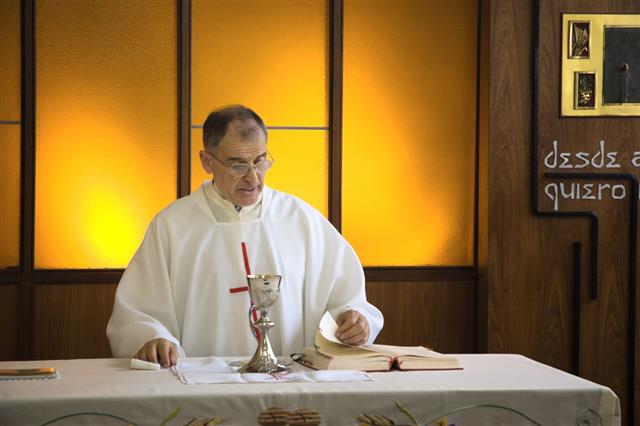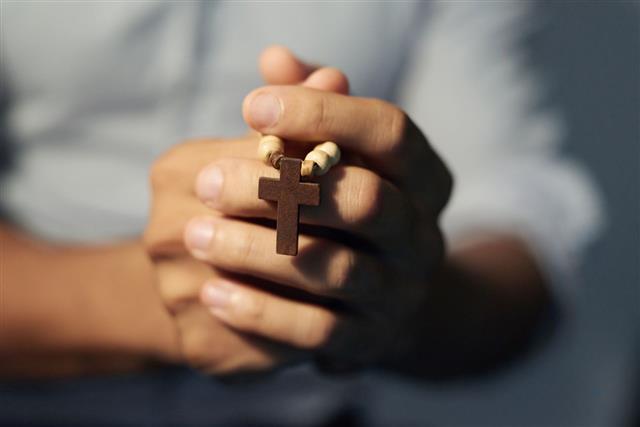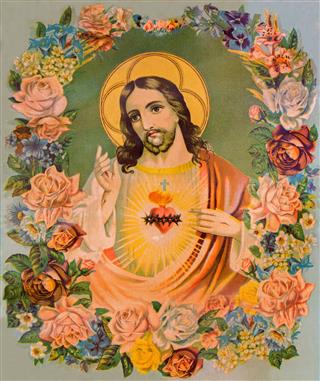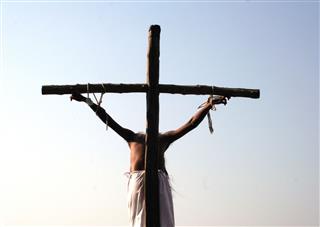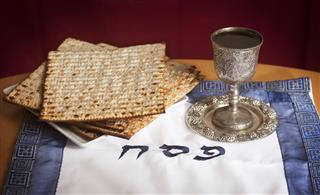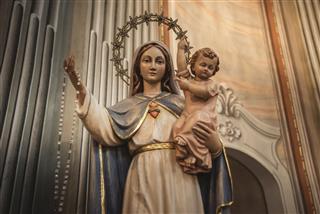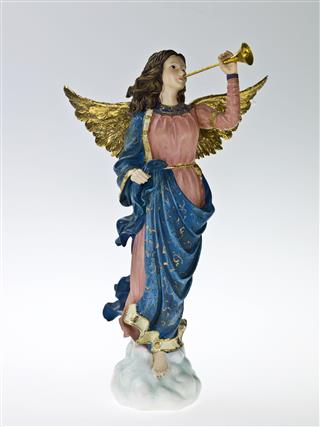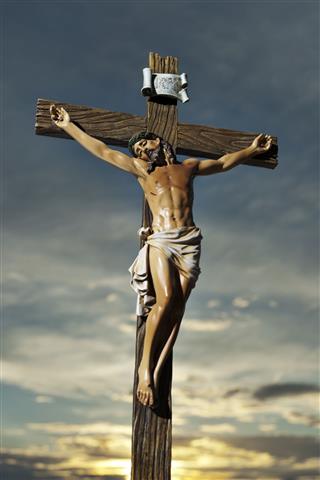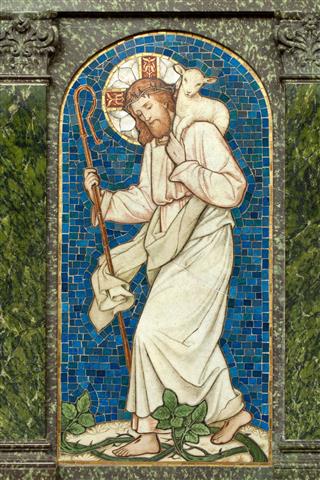
Since time immemorial, symbols have appeared in every culture, social structures, and religious systems. Simply put, symbols, signs, and objects are used as mediums to channelize thoughts, prayers, and ideas. While the Cross remains to be one of the most popular symbols of Christianity, the Catholic church has a number of symbols incorporated into their identity.
For the common man, it is through these symbols that they can base their understanding of complex religious philosophies.
In the spiritual realm, these objects, signs, and symbols take on the role of acting like a badge of faith as well as a teaching tool. You can even call these objects as the means to distinguish and identify one religion from the other. Symbolism may be defined as the investment of outward things or actions for the expression of religious ideas.
While the cross, crucifix, and the rosary are well-known symbols used to identify followers of Christ, the Catholic Church has many more symbols and objects that sets them apart. These symbols are a vital part of the Catholic religion, and needless to say, each has its own deep significance.
Symbols of Christ
A symbol of sacrifice, hope, and salvation, the cross is one of the most popular symbols of Christianity. Rightly called the wood of Christ, it is a reminder of Jesus’ death by being nailed to a cross. However, it represents Christ’s victory over sin and death, and translates to being a beacon of hope for Christians.
The crucifix is nothing but a depiction of the cross that reveals the body of Christ as a reminder of the suffering and sacrifice made for mankind. The crucifix adorns the walls of homes and churches of Roman Catholics. It is placed facing the priest on the altar and facing the congregation above the Eucharistic altar. It is, in truth, the ultimate symbol of sacrifice.
Considered to be the holiest part in a Eucharistic celebration, the consecrated bread and wine are seen as the Body and Blood of Christ sacrificed on the altar. The priest and the laity become one in Christ after receiving the Holy Communion.
Now as they were eating, Jesus took bread, and after blessing it broke it and gave it to the disciples, and said, “Take, eat; this is my body.” And he took a cup, and when he had given thanks he gave it to them, saying, “Drink of it, all of you, for this is my blood of the covenant, which is poured out for many for the forgiveness of sins.”
―Matthew 26:26-28
Seen on the paschal candle, as well as on the vestments of the priest, the symbols of Alpha and Omega stand for Christ being the beginning and end of all things. They are also the first and last letters of the Greek alphabet.
“I am the Alpha and the Omega, the first and the last, the beginning and the end.”
― Revelation 22:13 (ESV)
Inscribed on liturgical items, vestments, gravestones, sacred vessels, and plaques, the Chi Rho is a symbol of Christ. Superimposed on one another, the Greek letters chi (X)―corresponding to the ‘Ch’―and rho (P)―corresponding to the ‘r’ of Christ―are often rendered in the form of a cross.
Essentially a Christogram, the IHS―also known as JHS, JHC, or IHC―is the Greek equivalent of the name of Jesus. Like the Chi Rho, IHS is superimposed on one another, and is used on liturgical vestments, vessels, as well as on the bread that is distributed as Holy Communion.
Ichthys is represented as two arcs intersecting to form a fish. ΙΧΘΥΣ is an acronym for Iēsous Christos, Theou Yios, Sōtēr, which translates into English as “Jesus Christ, God’s Son, Savior”. The symbol of fish is a brief profession of faith in the divinity of Christ and acknowledging Jesus as the redeemer of mankind.
Seen inscribed as a banner on the crucifix, INRI is the acronym for the Latin phrase Iēsus Nazarēnus, Rēx Iūdaeōrum. It translates to Jesus of Nazareth, King of the Jews. It is the title given to Jesus by Pontius Pilate, the Roman governor who ordered it to be inscribed over the cross on which Jesus was crucified.
The Lamb of God is a title rightly given to Christ by John the Baptist. There are many instances where Christ is referred to as the Lamb who sacrificed his life on the cross, thus, becoming the Paschal lamb or sacrificial lamb who redeemed the world by shedding His blood.
“Behold, the Lamb of God who takes away the sin of the world!”
― John 1:29 (ESV)
Depicted as a shepherd with his sheep, it is used as a title with reference to Christ. Jesus is called the good shepherd―the one who leads his flock to greener pastures as well as gives rest to the weary soul.
“I am the good shepherd. I know my own and my own know me, just as the Father knows me and I know the Father; and I lay down my life for the sheep.”
― John 10:14-15 (ESV)
Christ is considered to be a sower with seeds of faith, hope, and redemption. Christ is likened to being a farmer who goes about sowing his seeds with a hope that it will bear good fruit.
“The one who sows the good seed is the Son of Man.”
― Matthew 13:37 (ESV)
While the Lion of Judah referred to Judah, the fourth son of Jacob in the Old Testament, the Book of Revelation uses it to refer to Jesus. Both Jesus and King David hail from the tribe of Judah, making the lion a representation of the triumph of Jesus.
“Weep no more; behold, the Lion of the tribe of Judah, the Root of David, has conquered, so that he can open the scroll and its seven seals.”
― Revelation 5:5 (ESV)
The Paschal candle lit every year at the dawn of Easter is symbolic of the risen Christ. The flame of the candle is used to symbolize the eternal presence of Christ who is also called the light of the world.
“For God, who said, “Let light shine out of darkness,” has shone in our hearts to give the light of the knowledge of the glory of God in the face of Jesus Christ.”
― 2 Corinthians 4:6 (ESV)
Bread that is used as a symbol of sacrifice is made from wheat. Just like the grain of wheat that falls to the ground and dies so as to bear fruit, so is the life of Christ a sacrifice. This just goes to say that the grain of wheat is a symbol of Christ.
The Sacred Heart is depicted as a heart with a cross pierced through it and thorns twisted around the heart. It is a symbol of Christ’s eternal love for all humanity.
Symbols of the Holy Spirit
A symbol of God’s grace and peace, a dove is used to represent the Holy Spirit. The Paraclete or the Holy Spirit forms the third person of the Trinity.
“And when Jesus was baptized, immediately he went up from the water, and behold, the heavens were opened to him, and he saw the Spirit of God descending like a dove and coming to rest on him.”
―Matthew 3:16 (ESV)
Tongues of fire descending down to the earth is used to represent the gifts of the Holy Spirit. Just like the dove, it is a symbol of the Holy Spirit.
“And divided tongues as of fire appeared to them and rested on each one of them. And they were all filled with the Holy Spirit.”
― Acts 2:3-4 (ESV)
Symbols of Mary
The Rosary beads are used as a means to keep a count of the number of Hail Mary’s while contemplating on the episodes, also called the mysteries in the life and death of Jesus. It is the Catholic way of praying to Jesus by interceding through Mary. The Rosary prayer itself is akin to a Crown of Roses, or a garland of rose, laying emphasis on the life of Mary whose focus was Christ.
The Fleur-de-lis is a stylized lily that is used to decorate shrines, chapels, and grottos dedicated to Mary. It is used to symbolize the purity of Mary.
Considered to be a symbol of humility, chastity, innocence, and purity, the lily is often used to symbolize Mary. The white lily, in particular, is a flower of great beauty and when open, resembles a star and is likened to Mary.
Mary’s heart is depicted as pierced with seven wounds or swords, and has roses or flowers wrapped around the heart. This image is one of the most popular images of the Immaculate Heart, attracting the attention towards the love and virtues of the heart of Mary.
“Behold, this child is appointed for the fall and rising of many in Israel, and for a sign that is opposed (and a sword will pierce through your own soul also), so that thoughts from many hearts may be revealed.”
― Luke 2:34-35
Symbols of the Trinity
Called the trinity flower, it symbolizes the Holy Trinity―The Father, Son, and Spirit―triune God in one. Another popular symbol of the trinity is that of the Wood Lily or the Trillium flower.
Three interlocking arcs are used to represent the Father, Son, and Spirit. The equality of the arches is symbolic of the equal standing of the trinity.
Miscellaneous Symbols
Crossed keys are symbols of the Pope’s authority. St. Peter who was considered to be the first Pope was promised the key to the kingdom of Heaven. A representation of the triple tiara combined with two crossed keys of Saint Peter continues to be used as a symbol of the papacy and appears on papal documents, buildings, and insignia.
The triple cross, or the cross with three horizontal beams, is used as an emblem for the office of the Pope. One of the interpretations of the three crossbars, akin to the three bands of the tiara, is interpreted as teacher, lawmaker, and judge.
The mitre, or the bishop’s cap, and staff are common symbols used in the Roman Catholic religion. It simply signifies the office of the pastoral staff.
The Patriarchal cross or the archiepiscopal cross is seen on the coat of arms. Unlike the cross of the Pope, this has two horizontal bars signifying the archbishop.
Called an aspergil, the sprinkler is a liturgical element used to dispense Holy Water. The main objective behind using it is to prepare the congregation for the celebration of the Mass by moving them to sentiments of penance and reverence.
Also known as the thurible, it is used to burn incense during services. Burning of incense itself is symbolic of prayer and offering. The smell of incense is akin to the presence of God.
Placed at the entrance of the church, the stoup or the holy water font is used as a reminder of the baptismal promises. It also serves as a means to purify, and by the congregation, to sign themselves before entering the church.
Some of the other symbols are:
- The Seal of the Living God
- The Burning Bush
- The Holy Mountain
- The Key of David
- The Tree of Life
- The Star of Jacob
- The Brazen Serpent
- The Fountain of Life
- The Precious Pearl
- The True Vine
- The Rod of Jesse
- The Cornerstone
- The Sun of Justice
- The Lamp
- The Door
- The Eagle
- The Pelican
- The Stag (Deer)
- Peacock
- Crown of Laurels
- Crown of Thorns
The Catholic world is filled with both visual and verbal symbolism, and nowhere more so than in worship and ritual. Every word and action in Catholic rituals point beyond themselves to the divine life of God and the believer’s salvation.
